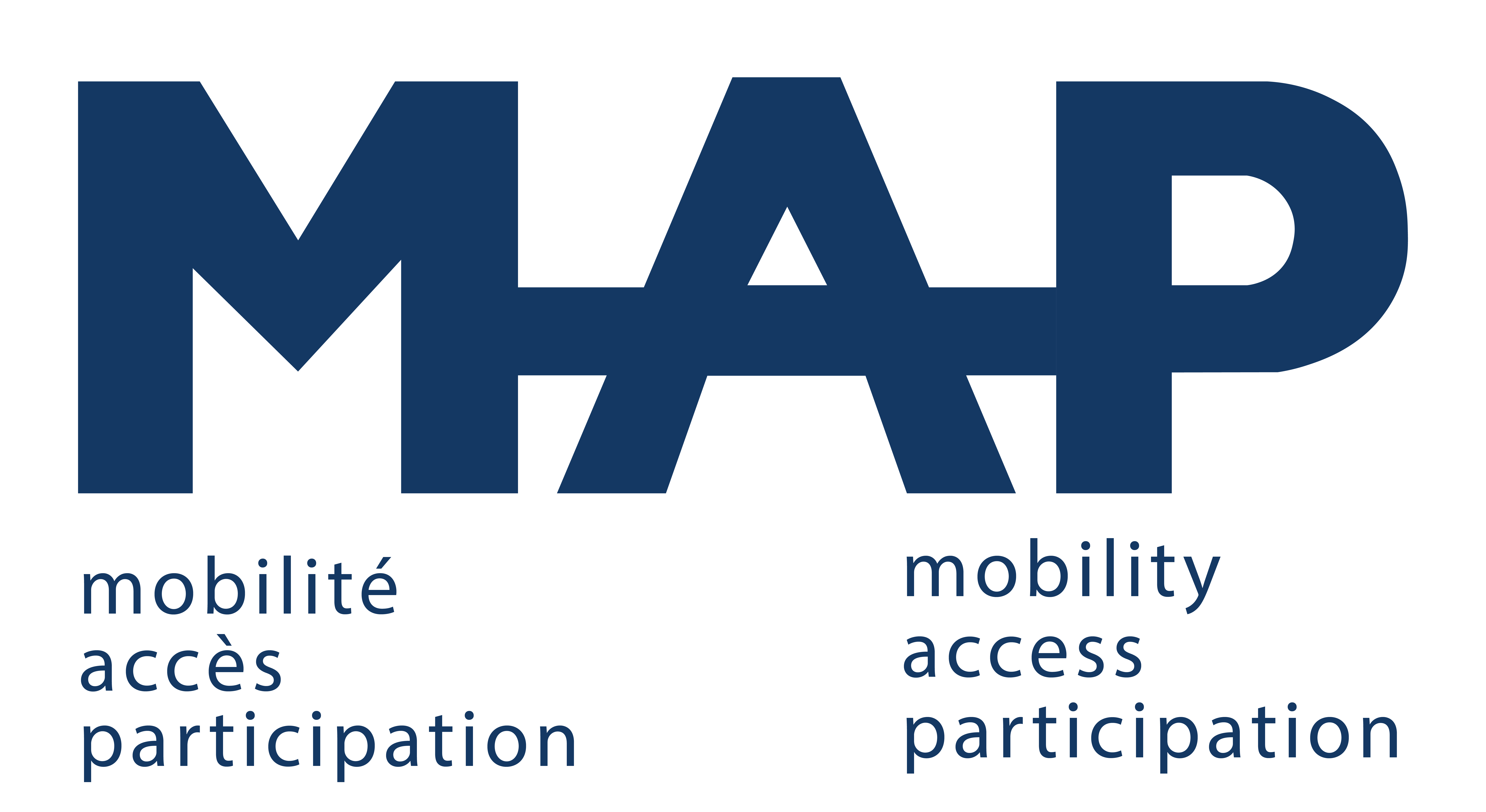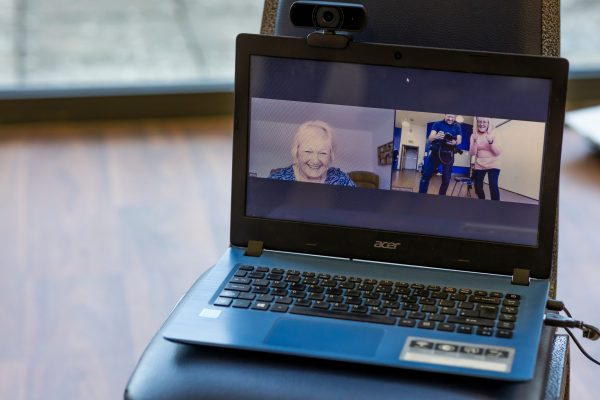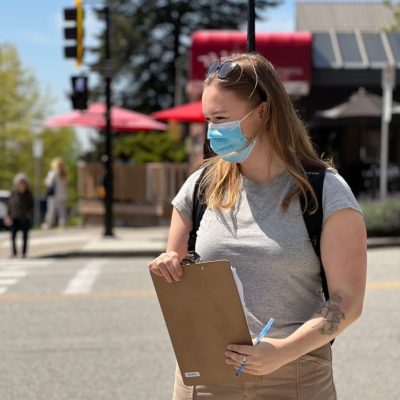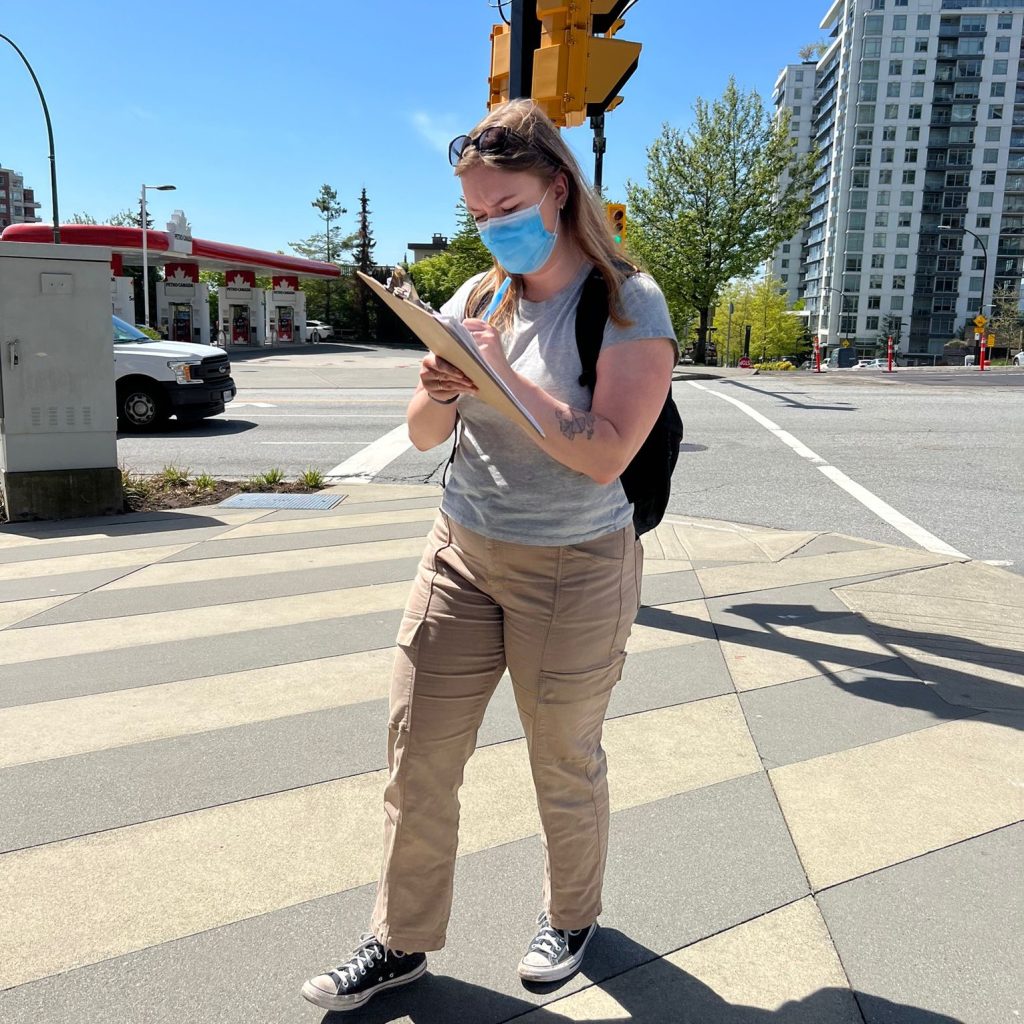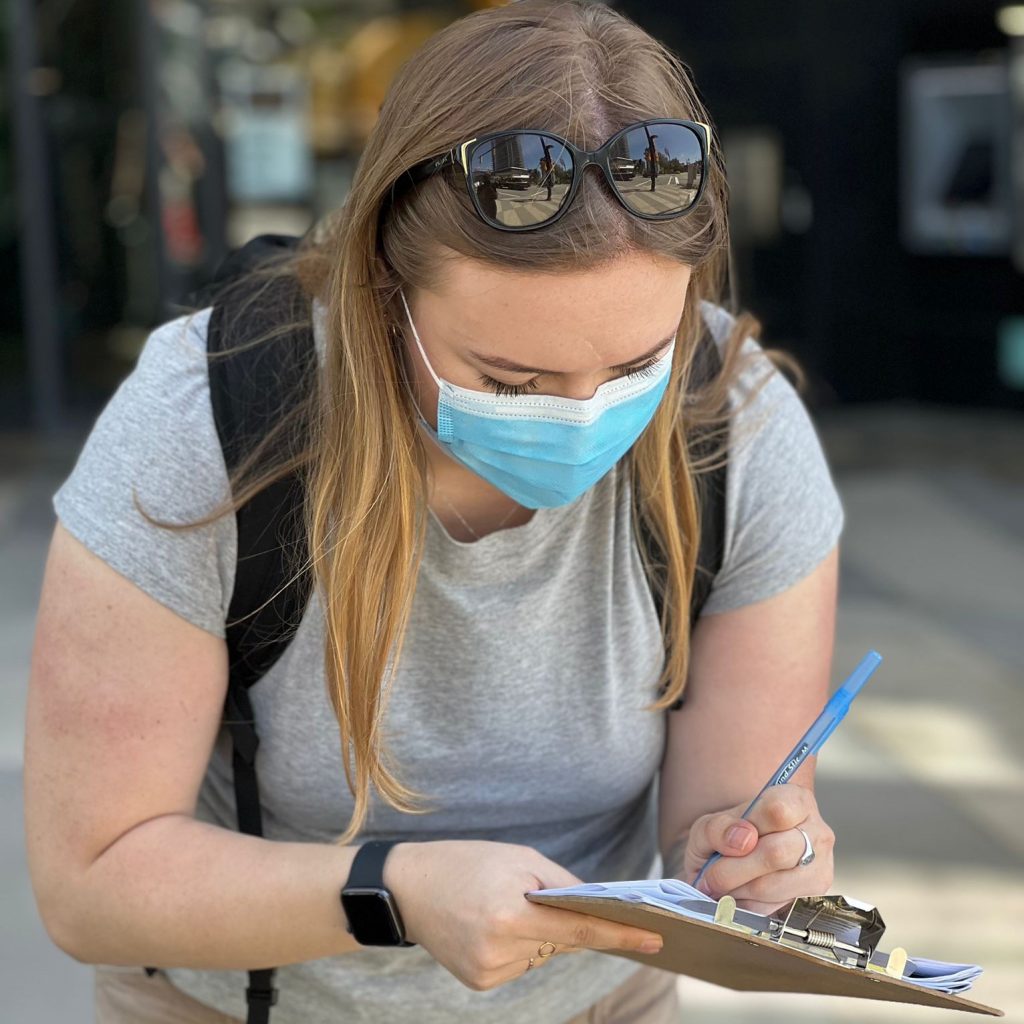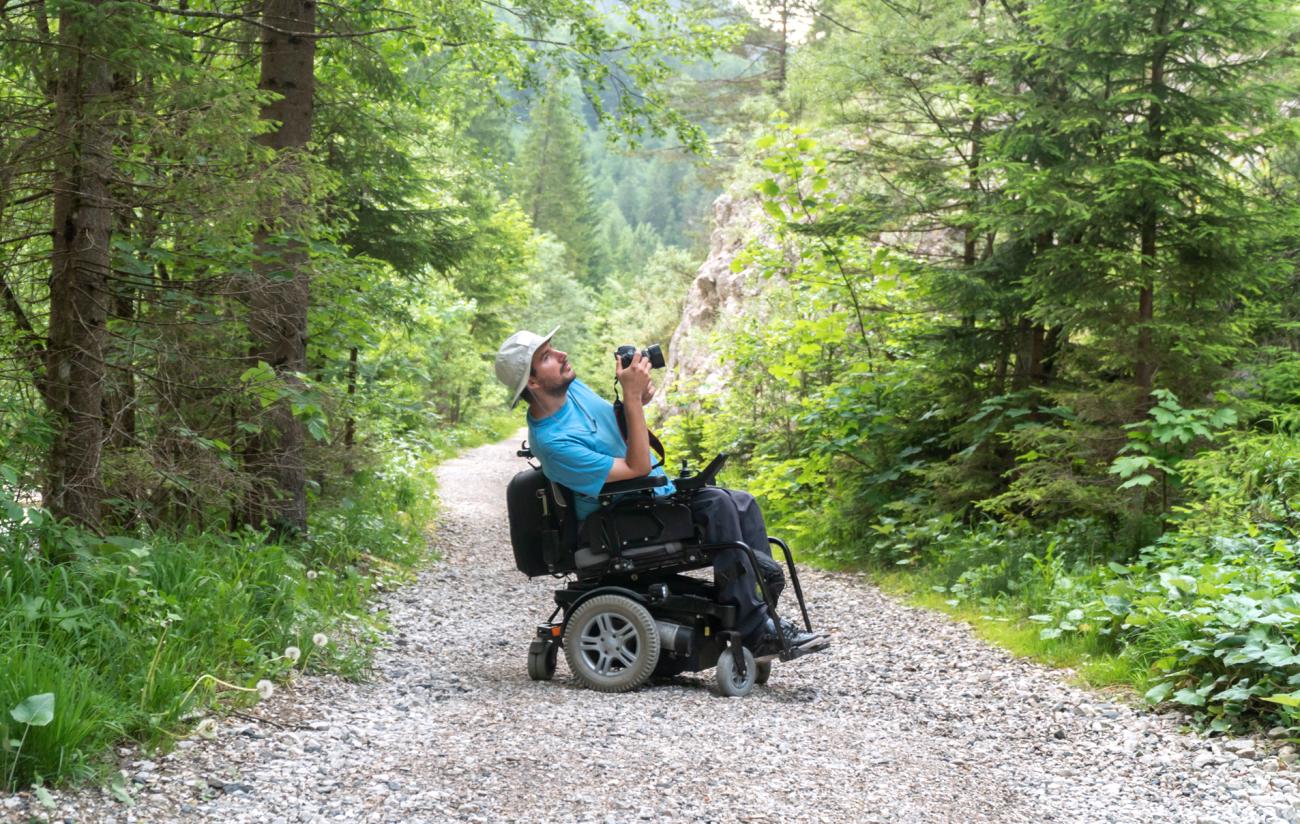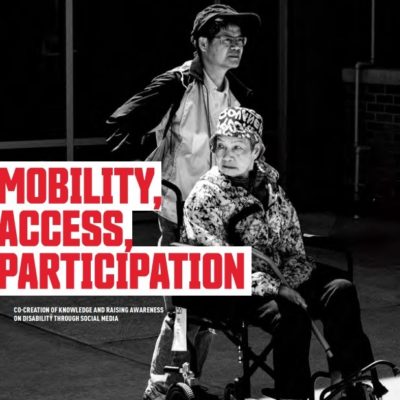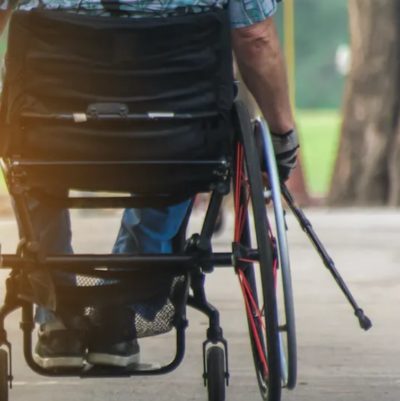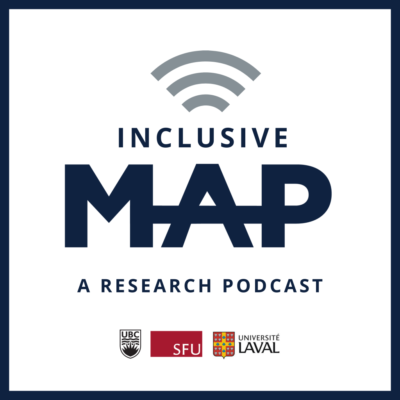By Chikkako Famadico, Holly Lemme, Thomas Jenkins, and Atiya Mahmood
For the full newsletter, click here.
Over 6.2 million Canadians over age 15 are living with one or more disability (e.g. physical, cognitive, sensory), including 1.5 million individuals who require mobility assistive devices for mobility and social participation in their communities (Statistics Canada, 2012; 2017). Canadians aged 65 years and older comprise the largest portion (approximately 38%) of Canadians living with at least one disability, and 24% of all Canadians using mobility assistive devices (Statistics Canada 2017). The prevalence, comorbidity, and severity of disability increases with age, with one in three older adults experiencing progressive disabilities; older adults may also experience cognitive and/or sensory disabilities along with mobility disabilities (Morris, 2019).
The “Towards Barrier-Free Communities: A Partnership for Improving Mobility, Access and Participation Among People with Disabilities (MAP)” project is a seven-year Social Sciences and Humanities Research Council (SSHRC)-funded project that works with community (e.g., people with lived experience) and civic partners (e.g., City of New Westminster) in developing, implementing, and assessing innovative interventions to improve the mobility and participation of people with disabilities. The goal of the SFU MAP project is to identify barriers in the built and social environments that inhibit equitable access to participation and mobility for older adults and people living with physical, cognitive, and sensory disabilities.
Two key research activities that are underway for the SFU MAP project include:
(1) the redevelopment of the Stakeholders Walkability/Wheelability Audit in Neighbourhoods (SWAN) tool for people who are blind or partially sighted, for people who are deaf or hard of hearing, and for people with early stages of dementia; and
(2) creation and implementation of an effective social media communications plan to engage with the public, partners, and stakeholders.
SWAN TOOL REDEVELOPMENT
The first priority of the SFU MAP project is the SWAN tool redevelopment. The SWAN tool is a user-led, environmental audit tool that allows individuals using mobility assistive devices to assess their surrounding urban environment for barriers to mobility and social participation. Completed audits using the SWAN tool can inform city designers and policymakers to improve accessibility and inclusivity of public spaces. Citizens, rather than researchers, use the tool to assess five main categories of their neighborhood: functionality, safety, appearance and maintenance, land use and support features, and social aspects.
The SFU MAP team is focusing on redeveloping the SWAN tool, adapting it for people living with dementia or sensory disabilities (e.g., low vision and hard of hearing). The new tools are being developed by way of a scoping review, input from persons with lived experience of sensory or cognitive disability, and combined with a literature search of existing population specific user-led environmental audit tools. Literature searches reveal a gap in relation to both population specific information (e.g., the experiences of hard-of-hearing individuals in urban environments) and user-led environmental audit tools. This highlights the need for the redeveloped versions of the SWAN tool, which will help us gain insight into the neighbourhood barriers and facilitators to out-of-home mobility and participation for people with cognitive and sensory disabilities.
Previous iterations of the SWAN tool used a pen-and-paper format, and the MAP research team is working with Jose Arias-Bustamante, from UBC, to develop a web-based desktop and mobile versions of the existing and new SWAN tool using Qualtrics for data collection.
COMMUNICATIONS PLAN
One of the critical parts of the SFU MAP knowledge mobilization (KM) strategy is to use social media communications to engage with primary stakeholders, the greater SFU academic network, the public, and community and municipal partners.
Social media platforms, or social networking services (SNS), are powerful tools that can instantly disseminate information and knowledge to a wide audience. There are three key behaviours unique to social media (knowledge seeking, knowledge-contributing, and social interactivity) that
allow the mobilization of knowledge to be readily available and easily accessible to the general public. (Ahmed et al., 2019). SNS communications are essential to the SFU MAP communications plan as they are invaluable tools to instantly connect and update stakeholders, partners, and the public about current project activities.
The SFU MAP communications plan will be targeting the following platforms to provide key research updates, raise awareness, and disseminate disability-related information and literature:(1) Facebook, (2) Instagram, (3) Twitter, and (4) LinkedIn. Each platform will be used to target different demographics based on current platform usage trends; Facebook will target a middle and older adult demographic, while Instagram will target a younger adult and adolescent demographic (Gambo & Özad, 2020). Further, Twitter and LinkedIn which are popular sites for professional advancement, networking, and self-presentation (Kim & Cha, 2017) will be used to target research professionals and academics.
Facebook and Instagram are the main platforms of focus for social interactivity with the public as they have the greatest networks and most active public users to date amongst the four SNS (Gambo & Özad, 2020). These two SNS are highly integrated and contain features that foster rich engagement, such as stories, highlights, and accessible external linking
(Ahmed et al., 2019; Thomas et al., 2020), which the communications team plans to capitalize on by posting on key disability-related dates and through sharing community engagement posts (e.g., trivia days to dispel disability-related misinformation and myths).
All SFU MAP public communications are following the W3C Web Content Accessibility Guidelines (WCAG) to ensure all social media communications are designed and disseminated with inclusivity and accessibility in mind. This includes specific SNS guidelines on descriptive image captions (i.e., best fonts and phrasing for low-vision readers), live video captions for
those hard of hearing, and inclusive visual design (i.e., colour contrasts of at least 4.5:1). MAP project stakeholders and community partners include people with lived experience of sensory disability, therefore, it is imperative that all SNS efforts strictly adhere to these guidelines to minimize community barriers and to ensure that all members of our SNS networks stay informed and have access to updated project information.
Atiya Mahmood, Eireann O’Dea, Catherine Bigonnesse, Delphine Labbe, Tanveer Mahal, Muhammad Qureshi & W. Ben Mortenson (2020) Stakeholders Walkability/Wheelability Audit in Neighbourhoods (SWAN): user-led audit and photographic documentation in Canada, Disability & Society, 35:6, 902-925, DOI: 10.1080/09687599.2019.1649127
Morris, Stuart P. and Statistics Canada. The Dynamics of Disability: Progressive, Recurrent or Fluctuating Limitations. Open WorldCat, http://epe.lac-bac.gc.ca/100/201/301/weekly_acquisitions_list-ef/2019/19-49/publications.gc.ca/collections/collection_2019/statcan/89-654-x2019002-eng.pdf.
Sarah Gambo, Bahire Ofe Özad, The demographics of computer-mediated communication: A review of social media demographic trends among social networking site giants, Computers in Human Behavior Reports, Volume 2, 2020, 100016, ISSN 2451-9588. DOI: https://doi.org/10.1016/j.chbr.2020.100016.
Statistics Canada (2012). Table 13-10-0345-01 Adults with disabilities DOI: https://doi.org/10.25318/1310034501-eng
Statistics Canada (2017). Canadian Survey on Disability.
Thomas, V. L., Chavez, M., Browne, E. N., & Minnis, A. M. (2020). Instagram as a tool for study engagement and community building among adolescents: A social media pilot study. Digital health, 6, 2055207620904548. https://doi.org/10.1177/2055207620904548
Yunis Ali Ahmed, Mohammad Nazir Ahmad, Norasnita Ahmad, Nor Hidayati Zakaria, Social media for knowledge sharing: A systematic literature review, Telematics and Informatics, Volume 37, 2019, Pages 72-112, ISSN 0736-5853, DOI: https://doi.org/10.1016/j.tele.2018.01.015.
